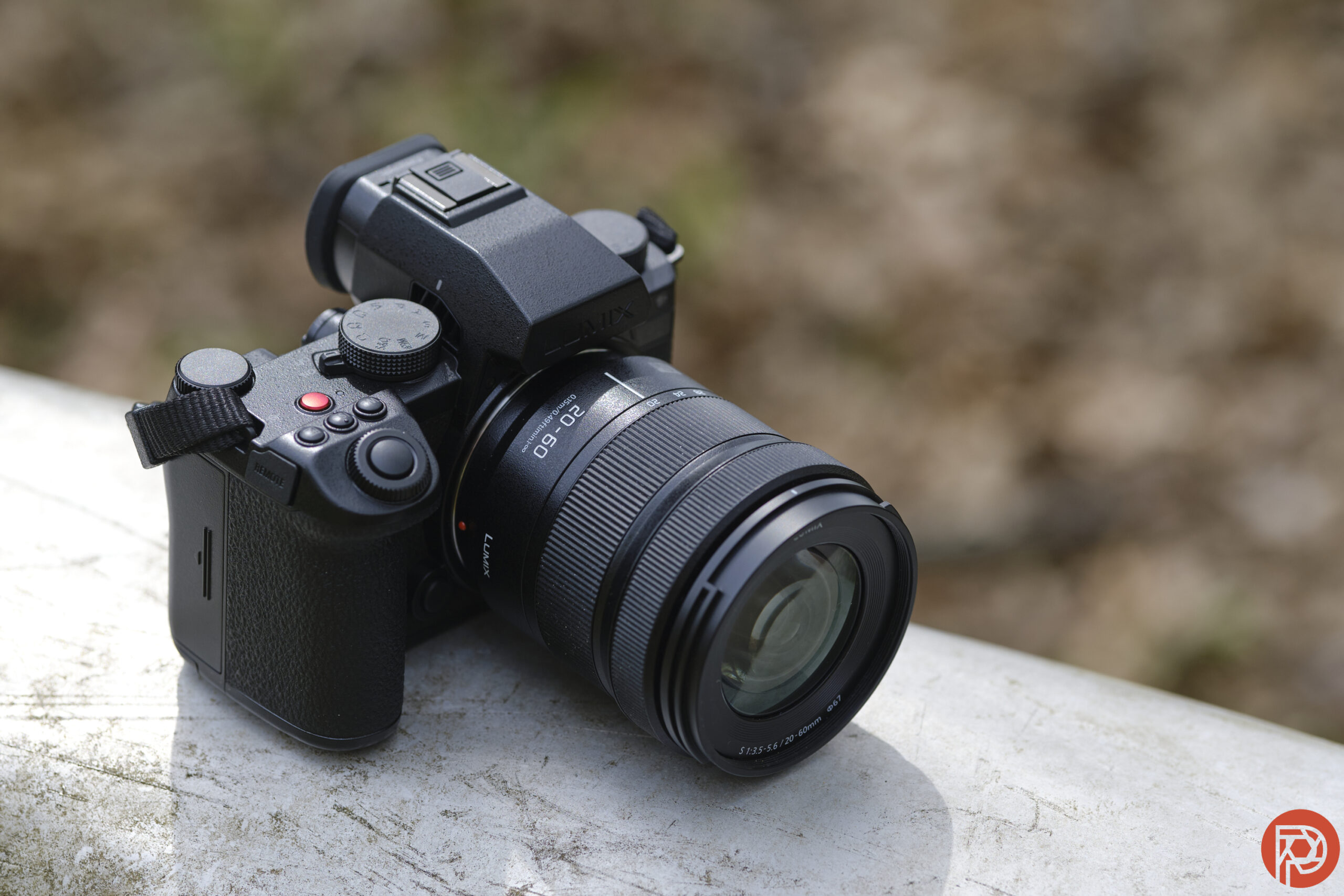It’s really hard to sometimes pick your first lens for a full-frame camera. Sure, you want a zoom lens that can do more than your phone can. But once you’re ready to make even better photographs, you’ll consider a few other options. And if you’re getting a Lumix camera, then there are some truly fantastic gems. Which one will you get? This guide will help you.
This piece is presented in partnership with Panasonic LUMIX. We’ve independently and ethically reviewed all the products in this post already without sponsorship. And we worked with them to recommend a few key lenses to choose from.
Table of Contents
How We Test and Choose the Best First Lenses for a Full Frame Camera by Lumix
- The Phoblographer’s various product round-up features are done in-house. Our philosophy is simple: you wouldn’t get a Wagyu beef steak review from a lifelong vegetarian. And you wouldn’t get photography advice from someone who doesn’t touch the product. We only recommend gear we’ve fully reviewed in these roundups.
- If you’re wondering why your favorite product didn’t make the cut, there’s a chance it’s on another list. If we haven’t reviewed it, we won’t recommend it. This method keeps our lists packed with industry-leading knowledge. Some of our stories include affiliate links. If you buy something through one of these links, we may earn an affiliate commission.
- When we test lenses, we’ve got various things in mind. First off, we consider who might want to buy the lens and what they might do with it. With that in mind, we try to tackle at least three genres of photography with that lens in a variety of situations. If the lens has weather resistance, then we’ll test it accordingly with a weather-resistant camera. We also test the autofocus of the lens in continuous mode, single mode, with exposure preview effects, without those effects, and then with all the major image quality parameters. These days, no one really makes a bad lens — but some are far better than others.
- In this specific roundup, we’re basing our findings on the reviews that we’ve done. We’re choosing a favorite, but we’re also giving photographers a bunch of others that they might like depending on how they shoot.
Lumix S 20-60mm f3.5-5.6: For the Traveler
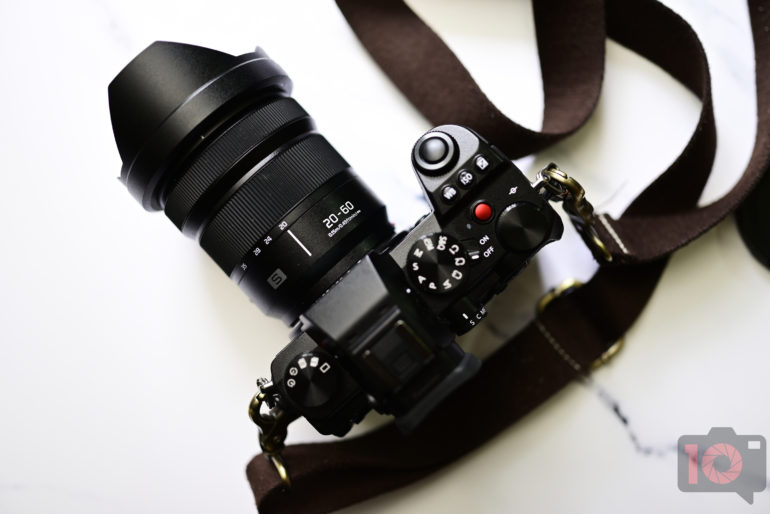
The LUMIX 20-60mm f3.5-5.6 goes wider than most other kit lenses on the market. This is part of what makes it very unique and that lends itself to more play. If you’re a fan of traveling or taking landscapes, then this is the lens to get with your camera. Plus, it has weather resistance for those times when you truly need something extra durable or want to go shooting photos on the beach. You’ll even be able to handhold it at slower shutter speeds when shooting at night because of how wide it is and LUMIX’s image stabilization.
Tech Specs
| Angle of View | 94° to 40° |
| Aperture Blades | 9, Rounded |
| Aspherical Elements | 2 |
| Autofocus | Autofocus |
| Brand | Panasonic |
| Diameter | 3.1″ |
| Extra Low-Dispersion Elements | 3 |
| Filter Size | 67.0mm |
| Focal Length | 20.0-60.0 |
| Groups/Elements | 9/11 |
| Hood Included | Yes |
| Image Stabilization | No |
| Item Type | Lens |
| Length | 3.4″ |
| Low Dispersion Elements | 3 |
| Maximum Aperture | f/3.5 |
| Maximum Magnification | 0.43x |
| Mfr. Part Number | S-R2060 |
| Minimum Aperture | 22.0 |
| Minimum Focusing Distance | 0.5’ |
| Mount | L Mount |
| Weight | 0.8 lb. |
What We Think
In our review, we state:
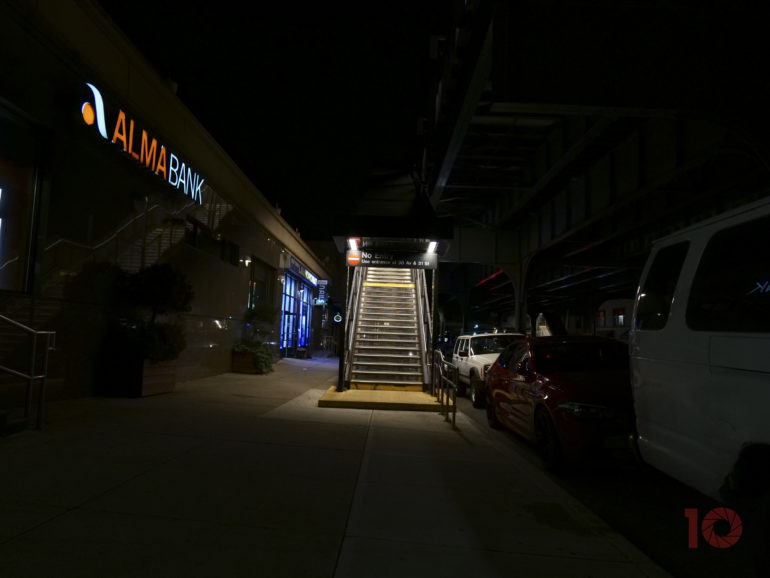
Lucky for you, the Panasonic LUMIX S 20-60mm f3.5-5.6 is weather sealed. So when you buy the lens as a kit with the camera, you’ll get maximum build quality. That’s very refreshing. It’s nice to know you can take it out anywhere.
Lumix S 35mm f1.8: For The Documenter
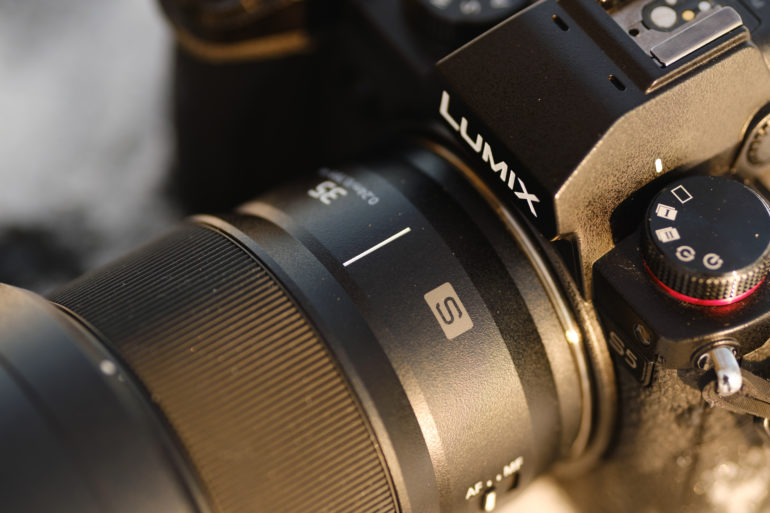
We’re huge fans of 35mm lenses here at the Phoblographer. And the Panasonic LUMIX S 35mm f1.8 is no exception. With weather resistance and a view akin to how the human eye sees the world, there’s a lot of love here. We recommend that people use it to take photos of the things they most adore in life. Your pets, your family, your friends, and the moments that demand that you bring a camera with you because they’re just so joyous are the ones that will make this lens truly shine. The f1.8 aperture lets you both shoot in very low light and give you the beautiful background blur that your phone simply can’t produce.
Tech Specs
| 35mm-Equivalent Focal Length | 22x |
| Angle of View | 63° |
| Aperture Blades | 9, Rounded |
| Aspherical Elements | 3 |
| Autofocus | Autofocus |
| Brand | Panasonic |
| Dimensions | ø x L: 2.9 × 3.2″ |
| Extra Low-Dispersion Elements | 3 |
| Filter Size | 67.0mm |
| Focal Length | 35.0-35.0 |
| Groups/Elements | 9/11 |
| Hood Included | Yes |
| Image Stabilization | No |
| Item Type | Lens |
| Lens Type | Wide Angle |
| Max Aperture | 1.8 |
| Mfr. Model Number | S-S35 |
| Minimum Aperture | 22.0 |
| Minimum Focusing Distance | 0.8’ |
| Mount | L Mount |
| Weight | 0.7 lb. |
What We Think
In our review, we state:
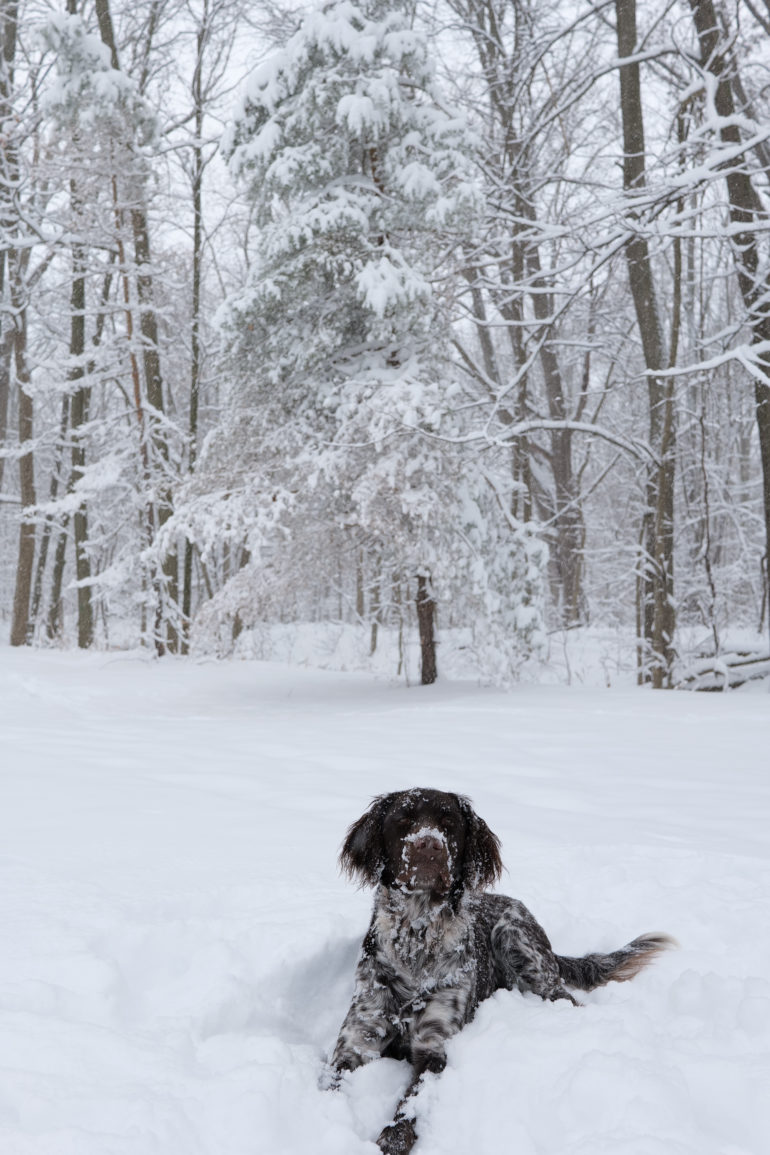
With the ability to focus up to 0.8 feet away, the Panasonic S 35mm f1.8 offers pretty reliable performance. It rarely missed while shooting landscapes. On action coming towards the lens, it missed a shot or two but was consistent with what I would expect from a wide-angle lens mounted on the S5.
Lumix S 50mm f1.8: For Everything
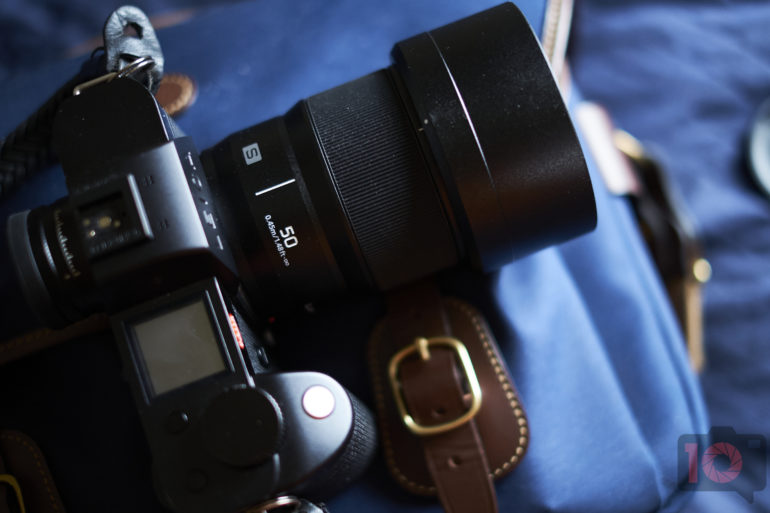
The Panasonic LUMIX S 50mm f1.8 is quite a great one! It’s small, affordable, weather sealed, fast to focus with, and in many ways, nearly perfect in the world of nifty 50 lenses. It’s pretty impossible to take a “bad photo” with this lens because there’s just so much going for it. You might not even want to upgrade to the Lumix S Pro 50mm f1.4.
Tech Specs
| 35mm-Equivalent Focal Length | 50mm |
| Angle of View | 47° |
| Aperture Blades | 9, Rounded |
| Autofocus | Autofocus |
| Brand | Panasonic |
| Compatibility | Full Frame |
| Diameter | 2.9″ |
| Extra Low-Dispersion Elements | 1 |
| Filter Size | 67.0mm |
| Fluorite Elements | 22 |
| Focal Length | 50.0-50.0 |
| Groups/Elements | 8/9 |
| Hood Included | Yes |
| Image Stabilization | No |
| Item Type | Lens |
| Length | 3.0″ |
| Lens Type | Normal Range and Normal Range |
| Max Aperture | 1.8 |
| Maximum Magnification | 0.14x |
| Mfr. Model Number | S-S50 |
| Minimum Aperture | 22.0 |
| Minimum Focusing Distance | 1.5feet |
| Mount | L Mount |
| Ultra High-Refractive Index Elements | 1 |
| Weight | 0.7 lb. |
What We Think
In our review we state:

Of course, this is a nifty 50. So it’s easy to use. Put the Panasonic 50mm f1.8 S on any L-mount camera, and it should perform very well. There’s a focusing switch on one side. So, make sure you don’t accidentally hit this. But in all my time using the lens, that didn’t happen.
Lumix S 85mm f1.8: For the Portrait Photographer
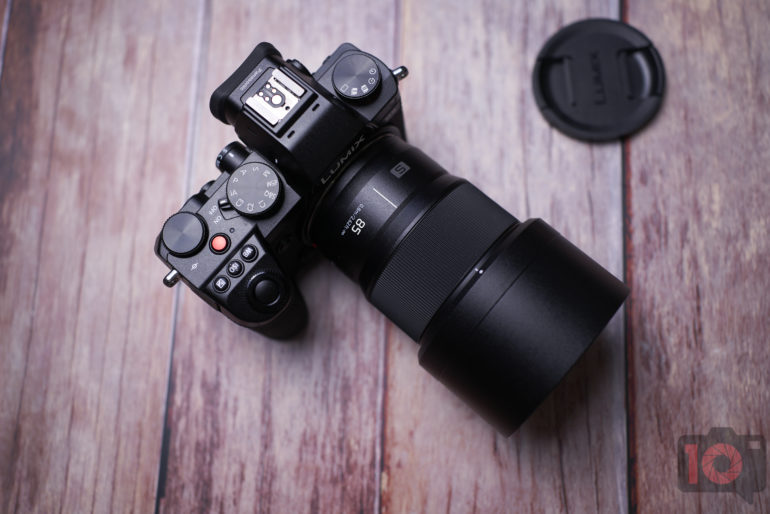
The Panasonic LUMIX S 85mm f1.8 is known for being one of the sharpest lenses that the L-mount alliance makes. And for the bargain that you’re paying for it, we consider it to be a gift to photographers. This lens is small, lightweight, weather resistant, and delivers beautiful color along with bokeh for days. It’s truly hard to find a fault with it and it’s gotten even better with new LUMIX firmware updates to their cameras.
Tech Specs
| Angle of View | 29° |
| Aperture Blades | 9, Rounded |
| Autofocus | Autofocus |
| Brand | Panasonic |
| Diameter | 2.9″ |
| Extra Low-Dispersion Elements | 2 |
| Filter Size | 67.0mm |
| Focal Length | 85.0-85.0 |
| Format | Full-Frame |
| Groups/Elements | 8/9 |
| Hood Included | Yes |
| Image Stabilization | No |
| Item Type | Lens |
| Length | 3.2″ |
| Max Aperture | 1.8 |
| Maximum Magnification | 0.13x |
| Mfr. Model Number | S-S85 |
| Minimum Aperture | 22.0 |
| Minimum Focusing Distance | 2.6’ |
| Mount | L Mount |
| Weight | 0.8 lb. |
What We Think
In our review, we state:

The Panasonic 85mm f1.8 has nine aperture blades and a beautiful, creamy bokeh. For what it’s worth, I really like it. I think most photographers will really like it for the price point. Is there better bokeh? Yes, but not for this price point.
What to Know About The Best First Lenses for a Full Frame Camera by Lumix
- If you shoot portraits, consider the 50mm or 85mm lens.
- If you shoot landscapes, try out the 20-60mm or the 35mm.
- Truly, you could create a whole kit for your Panasonic full-frame camera by buying all these lenses and therefore being all set.
- All the best Panasonic lenses under $800 are weather-resistant. In fact, Panasonic has built that feature into all their Lumix S lenses. It means that they’ll last that much longer because they’re so much more durable while being lightweight.
- All of these lenses work well with any L-mount camera.
Picking the Right One For You
If you’re still a bit confused as to the right lens for you, here are some questions to ask yourself
- What’s your budget?
- How will you use the product?
- What lighting situations are you in, and how will that affect what you’re doing? Our reviews hyperlinked in this article can help with that.
- Are you traveling a lot with it?
- Will you be using it in a situation that’s a bit rougher?
- Can you live without the best quality?
- Who else uses this product? How are they using it?
- What’s so appealing about this product that I can’t get from what I have already or something else?
- When will I really have time to use this product?
- Where will I bring this product?
- How will this product help bring me joy and joy in my photography?
These are just a few of the questions that we ask ourselves, but we think that you should ask yourself these for sure.


